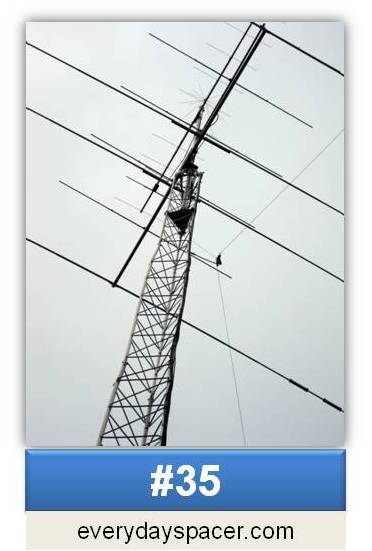 I knew there were a lot of Amateur Radio Satellites out there. I had no idea there were so many.
I knew there were a lot of Amateur Radio Satellites out there. I had no idea there were so many.
A very detailed story is told on Space Today Online. I’ll just give an overview of the story and a reference to a site with chart of the satellites still working.
The first HamSats were launched in the early 60s and continue to be launched in the new century though things have changed, like the cost to launch the satellite.
Many are named OSCAR “AMSAT satellites are called OSCAR, for Orbital Satellite Carrying Amateur Radio. The number of OSCARs reached a total of 50 satellites in 2002.” ~Ibid.
This is truly a worldwide, amateur^ effort as “All of the high-tech OSCARs have been financed through donations of time, hardware and cash from hams in the United States, Germany, Canada, Great Britain, Australia, Russia, France, Italy, Japan, Brazil, Argentina, Belgium, South Korea, Finland, Israel, Mexico, South Africa, Saudi Arabia, and other nations.” ~Ibid.
Most modern forms of communication are also used via Amateur satellites today including “… voice, Morse code and digital-computer signals. Most amateur satellites today carry gear for digital computer-to-computer communication and store-and-forward message bulletin-board systems (bbs). Sometimes they are science spacecraft with transmitters for radio propagation tests, ionospheric research, radioteletype and meteor sounding; receivers for radioastronomy, radiolocation and other original science research; and television cameras for photos of Earth and space. ” ~Ibid.
Hams have contests, awards and exchange all sorts of information all over the world using these extraordinary machines.
Much more can be seen on Dr. Anthony R. Curtis’s site including great drawings and photos of these birds which are, surprisingly, sophisticated and sometimes long lasting. I’ve just scratched the surface myself.
“Let’s See What’s Out There.” ~Jean Luc Picard from Star Trek, The Next Generation
See the AMSAT Operational OSCAR Satellite Status Summary for an idea of satellite health and operation.
How about using these satellites? We’ll delve into that, next time on Everyday Spacer!
NOTES:
*Some Equipment is Probably Involved
*Hams Are All Ages
*Some Equipment May be Donated, Perhaps Not All though
Sources
*http://www.amsat.org/amsat-new/satellites/status.php
*http://blog.makezine.com/2009/07/22/catching-satellites-on-ham-radio/
*http://www.spacetoday.org/Satellites/Hamsats/HamsatsBasics.html
*http://www.amsat.org/amsat-new/satellites/status.php
*http://www.flickr.com/photos/ka3rkw/178689031/
^an amateur from the French “lover of” ~Wiki






































HI Howard,It would be very interesting, atolhugh somewhat larger, also have the HF as for example in 29MHz or 21MHz sat even if you still listen to the satellites or HF-WeFAX translations and certainly in the future maybe some other CubeSat HF band will have some as yet on AO51, SO33, RS15 (SDR that could better monitor its eventual restart), AO07 and UO11.It would be an excellent and essential purpose of all OM for immediatly purchase one or twoo !!!Has its own built-in sound card and looks like the best among the small SDR simple business as easy to install and use!We look forward to the version with the HF Just no intention to a pro-pro with new extendet FCD additional device for HF?73 s and congratulations for the excellent product!Franco, hb9oab